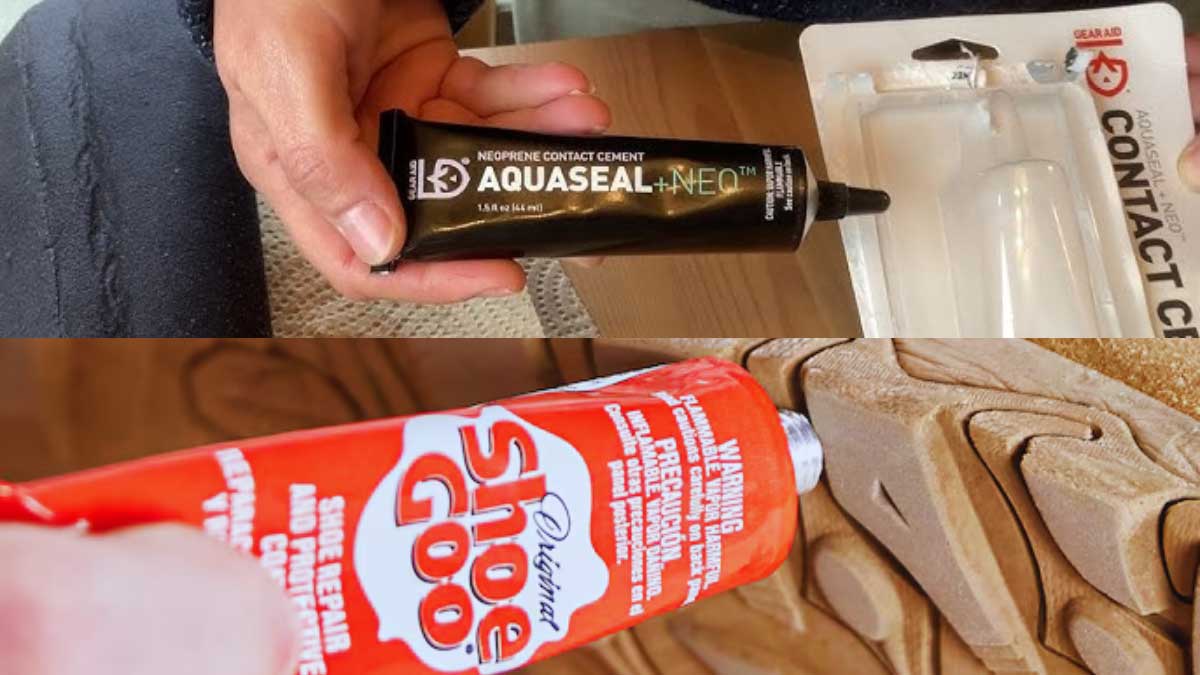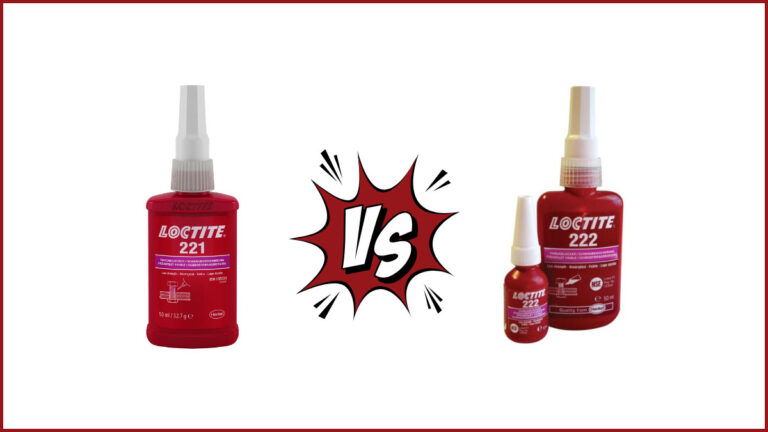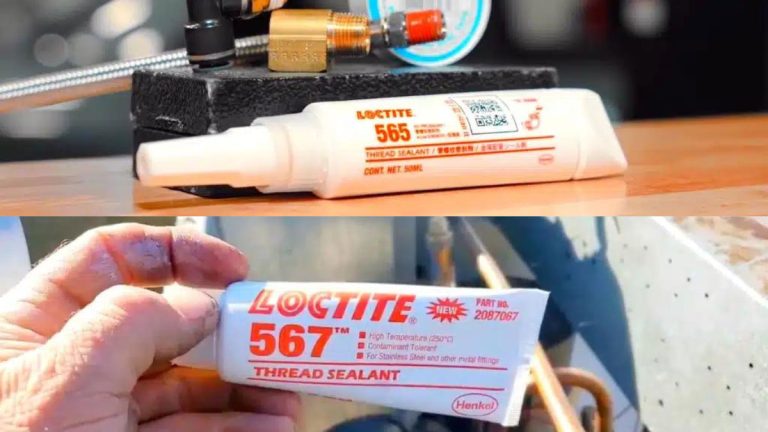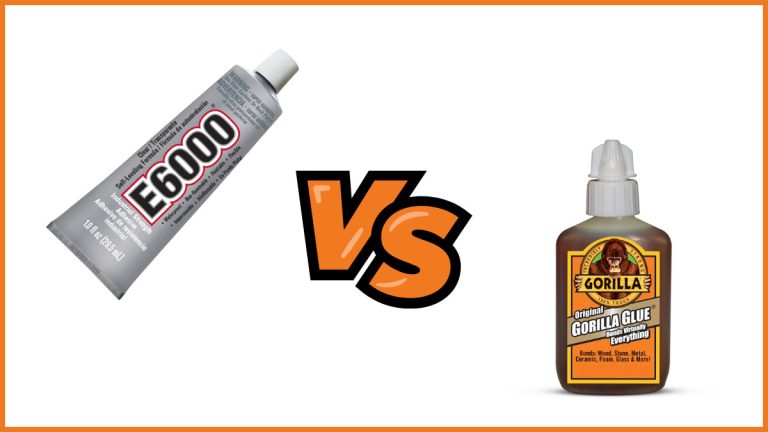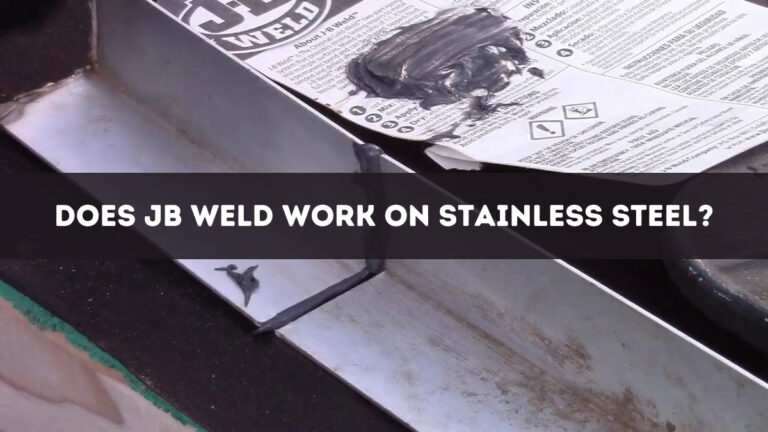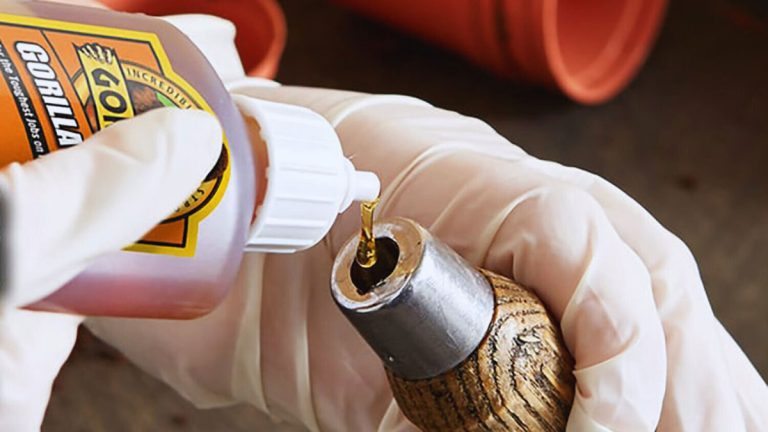Aquaseal vs Shoe Goo: Best Choice for Shoe Repairs Explained
When your favorite pair of shoes starts to show wear and tear, reaching for a reliable repair solution becomes essential. Two of the most popular options on the market are Aquaseal and Shoe Goo. Both promise to extend the life of your footwear, but how do you decide which one is right for you?
Understanding the key differences between Aquaseal and Shoe Goo can save you time and money. Whether you’re dealing with a torn sole or a leaky boot, knowing which product to use ensures you get the best results. Let’s jump into the specifics so you can make an informed choice and keep your shoes in top shape.
Key Takeaways
- Durability and Flexibility: Aquaseal offers superior durability and flexibility, making it ideal for heavy use and harsh conditions. Shoe Goo, while effective, can harden and become brittle over time.
- Waterproof Capabilities: Aquaseal provides excellent waterproofing, especially useful for outdoor gear and neoprene materials. Shoe Goo offers good waterproofing, primarily suited for common shoe repairs.
- Drying Time: Aquaseal takes longer to cure, requiring up to 24 hours, but ensures a stronger bond. Shoe Goo dries faster, making it a convenient option for quick fixes.
- Application Specificity: Aquaseal excels in repairs for outdoor gear like waders and wetsuits due to its deep material penetration and flexibility. Shoe Goo is better for everyday shoe repairs and customizations, thanks to its versatility and quicker drying time.
- Ease of Use: Shoe Goo is easier to apply and more suitable for quick repairs, whereas Aquaseal requires more thorough preparation and extended curing times for optimal results.
- User Feedback: Users highly rate Aquaseal for its reliability and lasting results in various applications. Shoe Goo receives mixed reviews; it excels in quick fixes and customization but falls short in long-term durability.
Overview Of Aquaseal And Shoe Goo
Choosing the right adhesive for your repairs can significantly extend the life of your gear. Let’s investigate into the specifics of Aquaseal and Shoe Goo.
What Is Aquaseal?
- Purpose: Aquaseal serves as an adhesive and sealant, mainly used for repairing and sealing outdoor gear like waders, boots, and waterproof equipment. It’s especially effective for bonding neoprene and synthetic materials.
- Properties: Aquaseal remains highly flexible after curing, making it ideal for applications involving stretching and movement. Its superior bonding strength is particularly beneficial in wet conditions.
- Usage: Common in the outdoor industry, Aquaseal is employed for both preventive maintenance and repairs to keep gear waterproof and durable.
- Purpose: Shoe Goo is an adhesive and sealant designed primarily for repairing and customizing footwear.
- Properties: Shoe Goo provides a flexible, waterproof bond, perfect for fixing worn soles, damaged heels, and other common shoe issues.
- Usage: Frequently used by those looking to extend the life of their footwear, Shoe Goo is popular among both casual users and shoe enthusiasts for its versatility in shoe maintenance and customization.
These adhesives offer distinct benefits tailored to their specific applications, ensuring your gear and footwear stay in top condition.
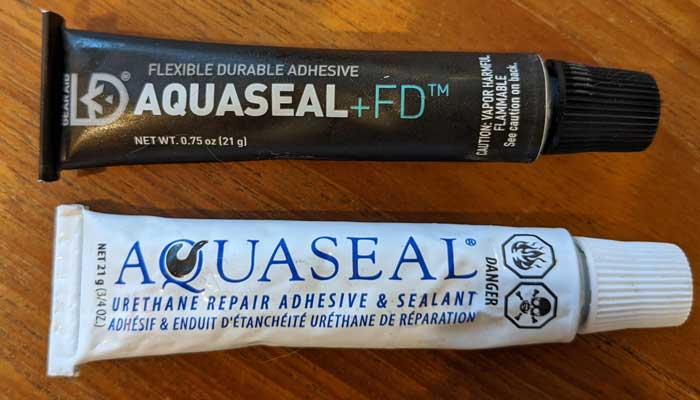
Key Features
Understanding the nuances between Aquaseal and Shoe Goo will help you make an well-informed choice for your shoe repair needs. Here’s a detailed comparison of their key features.
Durability
- Aquaseal: Known for its superior durability, Aquaseal penetrates deeper into materials, providing a stronger, longer-lasting bond. It’s ideal for heavy use and harsh conditions.
- Shoe Goo: While effective, Shoe Goo tends to harden and become brittle over time, especially with sun exposure. This brittleness can lead to cracks and weaker bonds.
Flexibility
- Aquaseal: Remains flexible after curing, which is crucial for materials requiring movement or stretching without cracking.
- Shoe Goo: Loses flexibility and becomes more prone to cracking as it ages, resulting in a shorter lifespan for the repair.
Waterproof Capabilities
- Aquaseal: Offers excellent waterproofing, making it suitable for sealing seams and preventing water intrusion.
- Shoe Goo: Provides decent waterproofing but may not be as effective in extreme conditions compared to Aquaseal.
Drying Time
- Aquaseal: Typically takes longer to cure, often needing up to 24 hours to fully set. This longer drying period can be inconvenient in urgent repair scenarios but contributes to its stronger bond and durability.
- Shoe Goo: Dries faster, usually within a few hours. This quick drying time makes it a more convenient option for quick repairs.
| Feature | Aquaseal | Shoe Goo |
|---|---|---|
| Durability | High | Moderate |
| Flexibility | High | Moderate |
| Waterproofing | Excellent | Good |
| Drying Time | Up to 24 hours | A few hours |
This detailed comparison highlights the strengths and weaknesses of both Aquaseal and Shoe Goo, helping you decide which product best meets your repair needs.
Application Process
Understanding the correct application process for Aquaseal and Shoe Goo is crucial to achieving a durable, effective repair. While both products are designed to mend and protect your footwear, following the right steps can make a significant difference in the results.
How To Apply Aquaseal
Preparation:
- Clean the Area: Use rubbing alcohol to remove any dirt and oils. Ensure the surface is entirely clean.
- Dry the Surface: Make sure the area is dry before applying Aquaseal.
Application:
- Thin Layer Application: Apply a thin, even layer of Aquaseal. Avoid over-application to prevent a messy finish.
- Drying Time: Allow Aquaseal to dry completely, which may take several hours depending on environmental conditions.
Curing:
- Penetration: Aquaseal penetrates the material—especially neoprene—and becomes more flexible once cured.
- Extended Curing: Let it cure for a longer period to ensure a robust bond.
How To Apply Shoe Goo
Preparation:
- Clean the Area: Similar to Aquaseal, start by cleaning the area with rubbing alcohol to remove dirt and oils.
- Ensure Dryness: The surface should be completely dry before applying Shoe Goo.
Application:
- Small Amount Application: Apply a small amount of Shoe Goo and spread it evenly over the area needing repair.
- Quick Setup: Shoe Goo dries faster than Aquaseal, making it a convenient option for quick fixes.
- Environmental Conditions: Select a well-ventilated area with moderate temperature for application and curing.
- Tool Use: Consider using a small brush or applicator for more precise application of both Aquaseal and Shoe Goo.
- Patience: Ensure you allow the recommended drying and curing times to achieve a solid, durable repair.
- Storage: Store both products in a cool, dry place to maintain their effectiveness for future use.
| Parameter | Aquaseal | Shoe Goo |
|---|---|---|
| Drying Time | Several hours, environment-dependent | Faster, suitable for quick repairs |
| Material Penetration | Deep, especially in neoprene | Limited, more surface-level |
| Flexibility | High, remains flexible after curing | Moderate, can become brittle over time |
| Durability | Excellent, ideal for heavy use and harsh conditions | Good, but less durable for long-term use |
| Ease of Application | Requires careful application and longer curing | Simple and quick application, dries quickly |
Adhering to these processes will help you achieve the best possible repair for your footwear, ensuring lasting protection and functionality.
Use Cases
Choosing between Aquaseal and Shoe Goo hinges on understanding the specific applications and environments each product best serves.
Outdoor Gear
Aquaseal excels in outdoor gear repairs due to its superior flexibility and durability. This product penetrates neoprene fabric, remaining flexible even after curing. When repairing items like waders or wetsuits, it’s crucial for the sealant to adapt to the material’s movements. Aquaseal provides a rugged, waterproof seal that withstands the dynamic nature of outdoor activities.
Key Features:
- Flexibility: Maintains flexibility after curing, ideal for neoprene and similar fabrics.
- Durability: Long-lasting bond, durable in harsh conditions.
- Waterproofing: Excellent for wading, diving, and other water-centric activities.
Shoe Goo, though applicable in similar scenarios, tends to crack over time, reducing its effectiveness for prolonged outdoor use. Its adhesion is less reliable on materials like rubber, necessitating careful application to maintain proper sealing.
Sample Applications:
- Sealing seams in waders
- Repairing tears in wetsuits
- Fixing holes in outdoor jackets
Footwear Repairs
Shoe Goo specifically targets footwear repairs, providing a flexible, waterproof bond for common shoe issues. It’s ideal for quick fixes and customizing footwear. Its faster drying time makes it convenient for urgent repairs, though it may harden and become brittle over time.
Key Features:
- Quick Drying: Dries faster, suitable for quick shoe repairs.
- Waterproof: Provides a waterproof bond ideal for everyday shoe fixes.
- Customization: Useful for adding extra grip or padding to shoes.
Aquaseal, while also effective for shoe repairs, offers a more durable and flexible solution. It ensures that repaired footwear withstands the wear and tear of daily use, making it preferable for long-term repairs.
Sample Applications:
- Reattaching soles
- Filling in worn-out heels
- Adding custom grips
Other Applications
Both products have additional use cases outside of their primary applications. Aquaseal’s strong adhesion and flexibility make it useful for other gear that requires waterproof seals and durable bonds, including backpacks and tents. Shoe Goo can be used creatively for craft projects or minor household repairs, though its primary strength remains in footwear.
Sample Applications for Aquaseal:
- Repairing tears in backpacks
- Sealing seams in tents
- Fixing punctures in inflatable items
Sample Applications for Shoe Goo:
- Craft projects
- Household item repairs
- Adding grip to various surfaces
| Feature | Aquaseal | Shoe Goo |
|---|---|---|
| Drying Time | Longer (up to 24 hours) | Faster (1-2 hours) |
| Flexibility | Maintains flexibility post-cure | Can become brittle over time |
| Durability | High, suitable for harsh conditions | Moderate, may crack in rugged use |
| Waterproofing | Excellent for neoprene and fabrics | Good, ideal for soles and heels |
| Ease of Use | Slightly longer curing, precise | Quicker drying, easy application |
Selecting the ideal product involves considering the specific requirements of your repair task. Use Aquaseal for robust, long-term repairs in outdoor gear, and consider Shoe Goo for quicker, convenient solutions in footwear and minor household fixes.
Pros And Cons
Examining the attributes of Aquaseal and Shoe Goo helps identify the best product for your needs. Each offers distinct advantages and disadvantages.
Pros Of Aquaseal
- Effective Adhesion: Aquaseal excels in adhesion, particularly for rubber and leather, when surfaces are meticulously cleaned.
- Durability: Known for its longevity and flexibility, Aquaseal remains resilient under flexing and stress.
- Penetration: It penetrates neoprene fabric effectively, producing a lasting seal.
- Customer Satisfaction: Many users report positive outcomes, noting its ability to extend the life of shoes and gear.
Cons Of Aquaseal
- Surface Preparation: Thorough cleaning and preparation are necessary for optimal results, which can be time-consuming.
Pros Of Shoe Goo
- Quick Drying Time: Shoe Goo dries faster, reducing repair time significantly.
- Convenience: Easily applied, Shoe Goo is ideal for quick fixes.
- Adaptability: Suitable for repairing various materials, including leather, rubber, and fabric.
- Customization: Perfect for personalizing shoes, offering flexibility in repair and design.
- Durability: Over time, Shoe Goo can harden and become brittle, reducing its effectiveness.
- Flexibility: Less flexible compared to Aquaseal, making it less suitable for applications subjected to constant flexing.
| Feature | Aquaseal | Shoe Goo |
|---|---|---|
| Adhesion | High, excellent for rubber and leather | Moderate, versatile for various materials |
| Durability | Long-lasting, flexible | Can harden and become brittle over time |
| Drying Time | Longer curing time, stronger bond | Quick drying, convenient for fast repairs |
| Penetration | High, especially in neoprene | Moderate |
| Ease of Use | Requires thorough preparation | Easy application, suitable for quick fixes |
| Customer Satisfaction | High, effective in extending product life | Variable, depends on application and materials |
Selecting the right product relies on understanding these attributes and considering your specific repair needs. For durable, outdoor applications, Aquaseal stands out, while Shoe Goo offers convenience for quick, versatile fixes.
User Experiences
User testimonials reveal vital insights into how Aquaseal and Shoe Goo perform in real-world scenarios.
Durability and Flexibility
- Aquaseal: Users frequently mention Aquaseal’s superior durability and flexibility. For example, wader repairs benefit from Aquaseal’s ability to penetrate neoprene and remain flexible after curing.
- Shoe Goo: In contrast, Shoe Goo tends to crack over time, making it less durable and flexible. Shoe repair enthusiasts often prefer Aquaseal for better bonding and long-term performance.
Adhesion
- Aquaseal: Known for its strong adhesion, Aquaseal excels at bonding to materials like neoprene and rubber. It often achieves excellent results with minimal application.
- Shoe Goo: While effective, Shoe Goo may require multiple applications to achieve similar adhesive strength.
Repair and Preventive Care
- Aquaseal and Similar Products: Users recommend Aquaseal and similar products such as Freesole for preventive care on new shoes. These products are praised for their ability to keep rands from peeling.
- Shoe Goo: Less favored for preventive care, Shoe Goo doesn’t perform as consistently in maintaining the integrity of new shoes.
Reviews Of Aquaseal
User reviews further highlight Aquaseal’s strengths in various applications:
- Neoprene Repair: Users note that Aquaseal penetrates well into neoprene and synthetic fabrics, providing a flexible, watertight bond.
- Outdoor Gear Maintenance: Customers praise Aquaseal for its long-lasting repairs on tents, backpacks, and waders. Its flexible nature ensures the repaired area withstands varying outdoor conditions.
- User Satisfaction: Overall, users express high satisfaction with Aquaseal, citing its reliable performance and long-term results.
Reviews Of Shoe Goo
Shoe Goo garners mixed reviews, reflecting its specific strengths and weaknesses:
- Quick Fixes: Users appreciate Shoe Goo for its fast drying time, making it convenient for urgent repairs.
- Footwear Customization: It’s popular for customizing shoes, providing a creative solution for minor modifications and decorative work.
- Long-Term Durability: Some users report that Shoe Goo can harden and crack over time, diminishing its effectiveness in long-term repairs.
- Ease of Use: Even though its limitations, Shoe Goo remains user-friendly, appealing to those needing quick and easy fixes without extensive preparation.
| Criteria | Aquaseal | Shoe Goo |
|---|---|---|
| Durability | Highly durable, remains flexible over time | Less durable, prone to cracking |
| Adhesion | Strong adhesion with minimal application required | Effective but may require multiple applications |
| Application | Best for outdoor gear, neoprene, and waterproof seals | Ideal for quick shoe repairs and customizations |
| Drying Time | Longer curing time, ensures robust bond | Quick drying, suitable for urgent repairs |
| User Satisfaction | High, especially for outdoor gear and durable repairs | Mixed, valued for convenience but limited in longevity |
Conclusion
Choosing between Aquaseal and Shoe Goo hinges on your specific repair needs. If you require a durable, flexible solution for outdoor gear, Aquaseal’s superior adhesion and waterproof capabilities make it the ideal choice. For quick, convenient fixes on footwear and minor household repairs, Shoe Goo’s faster drying time and ease of application offer a practical alternative. Both products have their strengths, so consider the nature of your repair to ensure you select the best option for extending the life of your items.
Frequently Asked Questions
What are Aquaseal and Shoe Goo?
Aquaseal and Shoe Goo are popular adhesives used to repair worn-out shoes and outdoor gear. Aquaseal is known for its flexibility and durability in wet conditions, making it ideal for outdoor gear. Shoe Goo is designed for footwear repairs, providing a quick, flexible, and waterproof bond.
Which product is better for outdoor gear repairs?
Aquaseal is generally recommended for outdoor gear repairs due to its superior durability, flexibility, and excellent waterproofing capabilities. It is ideal for items like waders, wetsuits, and tents.
How does Shoe Goo perform in everyday shoe repairs?
Shoe Goo works well for everyday shoe repairs, offering a quick-drying, waterproof solution that is easy to apply. However, it may harden and become brittle over time, making it less durable than Aquaseal for heavy-duty use.
What are the key differences in drying time between Aquaseal and Shoe Goo?
Aquaseal has a longer drying time, typically requiring 8-12 hours for a complete cure, which contributes to its strong bond. In contrast, Shoe Goo dries faster, usually within 24 hours, making it more convenient for quick fixes.
Can Aquaseal and Shoe Goo be used on other materials?
Yes, both products can be used on other materials. Aquaseal is versatile and effective on neoprene, synthetic materials, and even tents. Shoe Goo can also be used for craft projects and minor household repairs.
How should I prepare my shoes before applying Aquaseal or Shoe Goo?
For both products, clean the area thoroughly to remove dirt, oils, and debris. Ensure the surface is dry before application. Proper preparation helps achieve a stronger bond and longer-lasting repair.
What do user reviews say about the durability of Aquaseal and Shoe Goo?
Users generally praise Aquaseal for its superior durability and long-lasting repairs, especially for outdoor gear. Shoe Goo, while valued for its convenience and quick drying time, receives mixed reviews due to its tendency to crack over time.
Which product should I choose for quick, minor repairs?
For quick, minor repairs, Shoe Goo is a convenient option due to its faster drying time and ease of application. It works well for small fixes and everyday shoe maintenance.
Are there any specific use cases where one product is preferred over the other?
Aquaseal excels in heavy-duty and outdoor gear repairs, providing a flexible and durable seal ideal for waders, wetsuits, and tents. Shoe Goo is preferred for footwear repairs and quick fixes, though it may not be as durable for extensive use.

